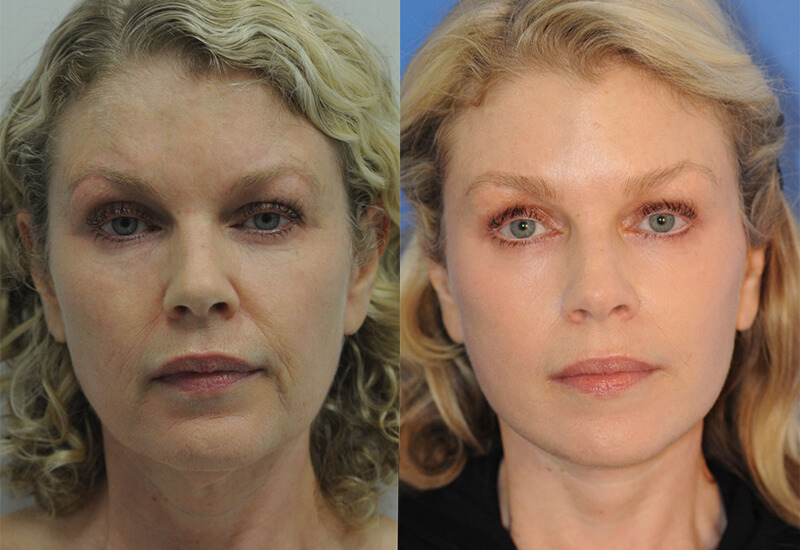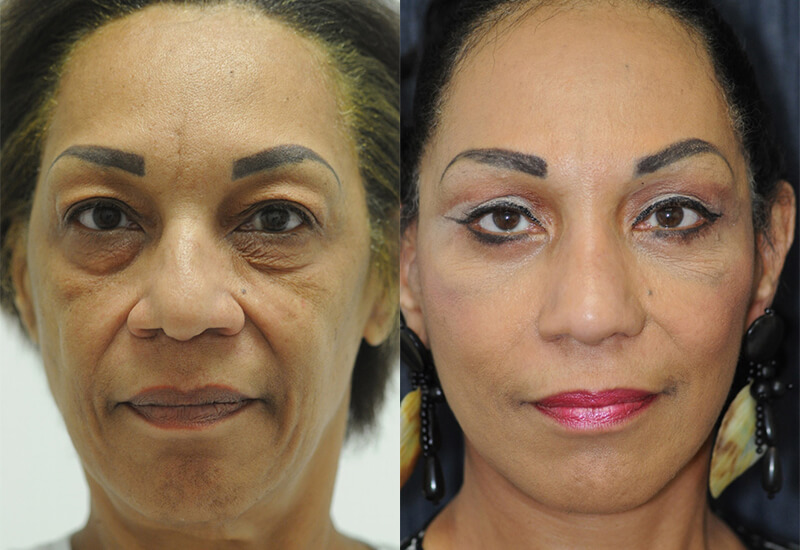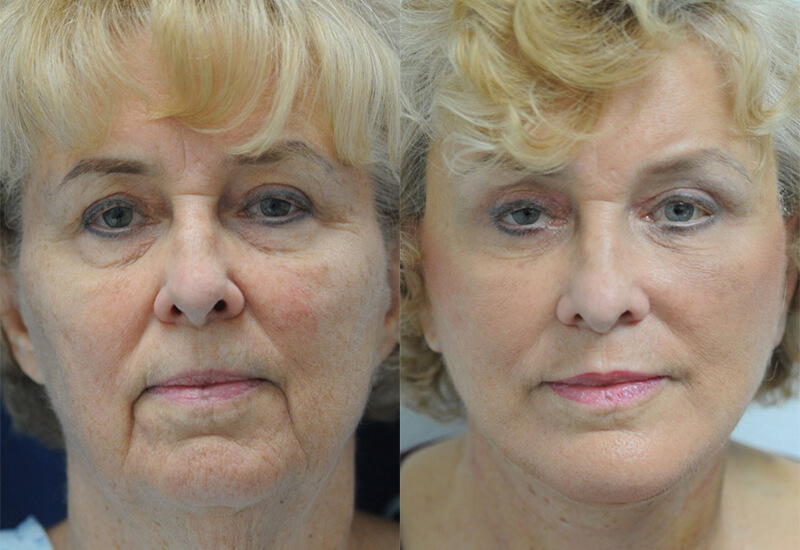Vertical Facelift in Beverly Hills
One of the most popular cosmetic procedures in the United States—for both female and male patients—is facelift surgery. A facelift can produce a more youthful, rejuvenated appearance for years to come.
Traditional facelift techniques involve pulling the facial skin horizontally, which can cause a noticeably wind swept, inauthentic look. Dr. Calabria has adopted a more modern and successful approach to extensive facial revitalization known as the vertical facelift. With this innovative technique, sagging facial skin is elevated vertically to provide a smoother, more youthful facial aesthetic without seeming unnatural.

Vertical Facelift in Beverly Hills Before & After Photos



Addressing Your Concerns
Recovery
You will likely experience swelling and bruising right after your vertical facelift. Patients should rest with their face and neck elevated for the first two weeks of their recovery to minimize discomfort and swelling.
During your recuperation, you will stay at a post-operative facility so your recovery can be monitored. Surgical drains may be placed to help prevent fluid accumulation, but these are typically removed after the second day. After the tubes are removed, you may be able to shower and wash your hair with the assistance of a professional.
Patients are released to return home after the second day with instructions to call Dr. Calabria with any questions and to check in periodically. The first few sutures are usually removed after one week, and the rest can be removed between 10 days and two weeks later.
Most patients can resume work and light exercise within two or three weeks. Strenuous activities should be avoided for up to four weeks after surgery.
Scars
Cost
Pain
Frequently Asked Questions
The best candidates for a vertical facelift are those who wish to address any of the following concerns:
- Fine lines and wrinkles in the lower face
- Jowls
- Pronounced nasolabial folds
- Noticeable marionette lines
- Sagging skin on the face and neck
A vertical facelift is less invasive than the traditional technique, so the risks are comparatively lower. However, as with any surgical procedure, some degree of risk is unavoidable. The risks most commonly associated with facelifts include:
- Unfavorable scarring
- Nerve damage
- Infection
- Allergic reaction to anesthesia
- Temporary or permanent hair loss around the incision sites
- Bleeding
- Swelling
